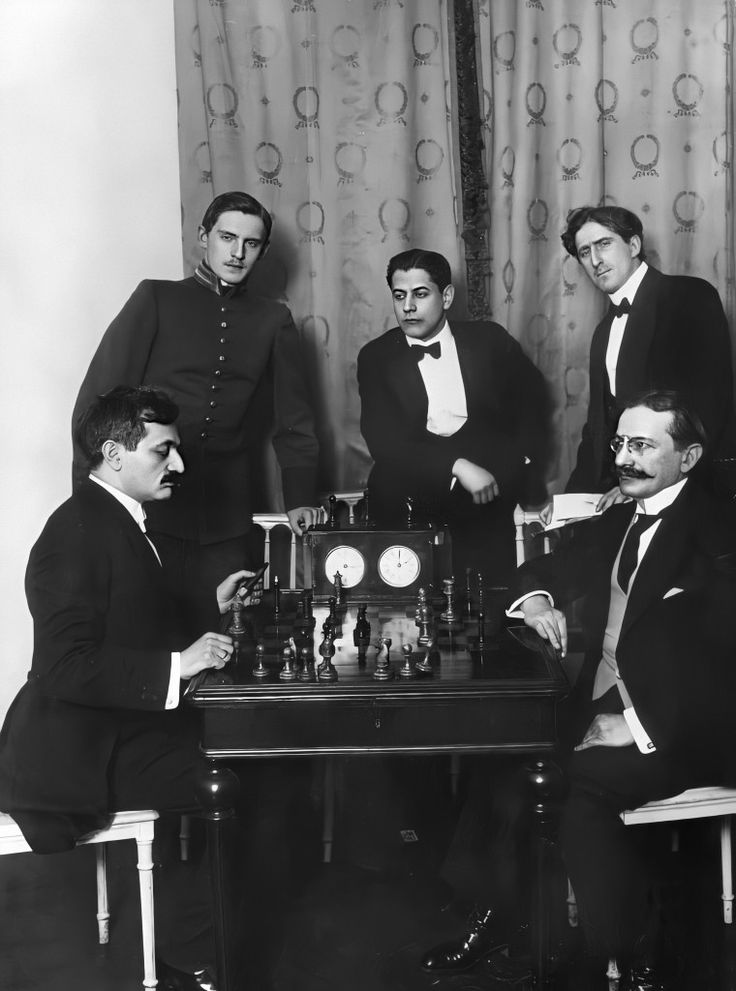We know that “Staunton” chessmen were sold in Tsarist Russia in the second half of the 19th Century. Here, for example, is an ad from Mikhail Tchigorin’s chess journal, Shakhmatniy Vestik, in 1885, for “Turner Teich,” with a St. Petersburg street address.

The first item listed is Staunton-style chessmen. Unfortunately, the ad contains no photos or sketches of the pieces, so we are left to wonder what they looked like.
The photographic record is sparse. Lenin’s set is on display in the Museum of the Revolution, and photos of it can be found, but it is unclear that it is of Tsarist, as opposed to English, or German, or some other origin. Lenin reportedly played with it in Leipzig in 1912.

Singapore collector Steve Kong has a very similar set in his collection.


A different set claims to be “Lenin’s Exile Set.”

There are a handful of photos of the St. Petersburg Tournaments of 1909 and 1914, where Karelian Birch sets were used.

All of these sets arguably are “Staunton” designs, broadly construed.
In doing some research on sets of Ancient Rus in Isaak Linder’s The Art of Chess (1994), I came across a photo of a set he identifies as coming from St. Petersburg in the late 1800s. It literally has been hiding in plain sight.

These pieces are unquestionably Staunton, even by the strictest definition. The royals and clerics have the “three collar” structure typical of Jaques and other English Staunton pieces. The king’s crown is topped by a cross. The queen wears a distinct coronet. The bishop’s miter is cut. The knight has the S-shaped Staunton shape, and its ears are pinned back as in Jaques and other English Staunton knights. The rook’s turret contains distinct merlons. The bases step up to the stems, which rise to a near perpendicular joint with the pedestals. The pieces appear to have a high quality finish, and even bear stamping on the king’s base reminiscent of the Jaques practice. Unfortunately, as of this writing, neither Sergey Kovalenko nor I could find any further information on the Heitz Company of St. Petersburg.
Sergey, however, has enlarged and enhanced the king’s base inscription in Linder’s photo.

The right word translates to “St. Petersburg.” The left word is incomplete. It appears to say, “…ичъ (еичъ).” Sergey suggests that in its entirety it could read “Токарь Теичъ,” the same Turner Teich of Tchigorin’s 1885 journal ad. I think this is an eminently reasonable inference. What the relationship is between Turner Teich and the “Heitz Company” Linder references remains to be established. Sergey suggests it could be nothing more than a mistaken transliteration by Linder.
Hopefully more images of Tsarist Staunton sets will emerge. Perhaps new information will come to light to help us verify sets we claim or suspect to be Tsarist that will allow us to confirm their Tsarist origins. Better still, we look forward to the emergence of more sets—Staunton and otherwise—verifiably from the late Tsarist period.

